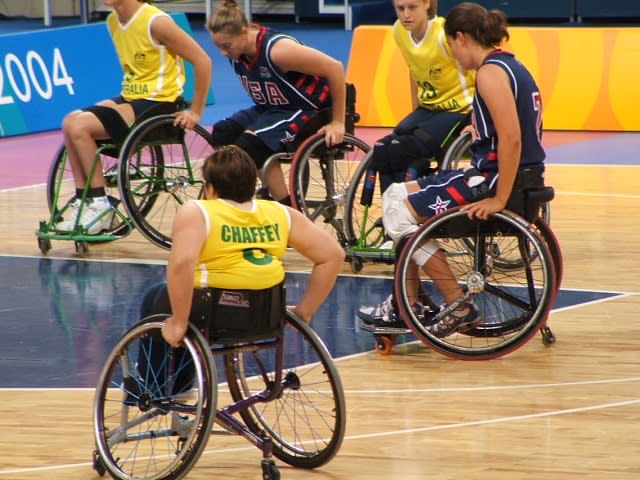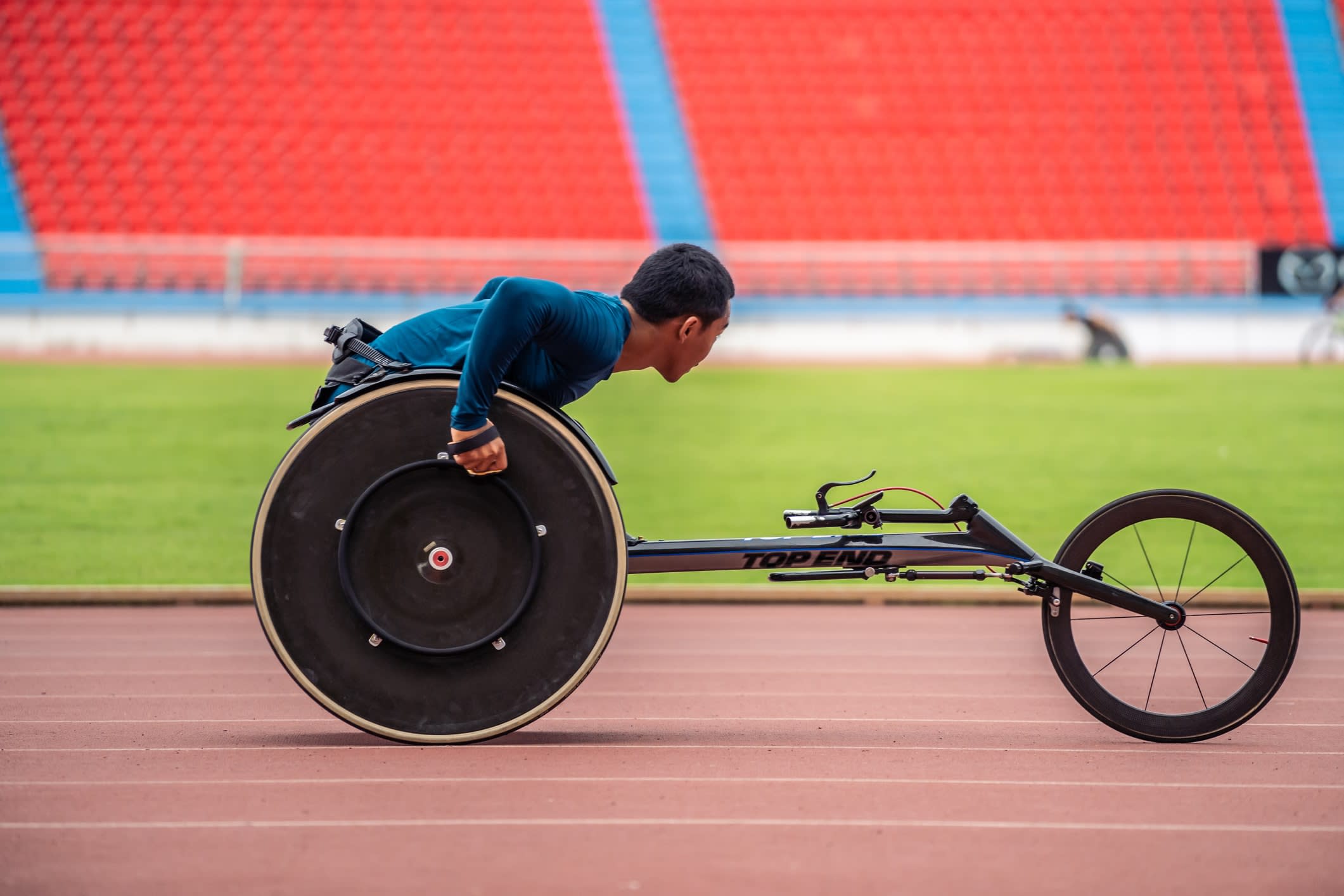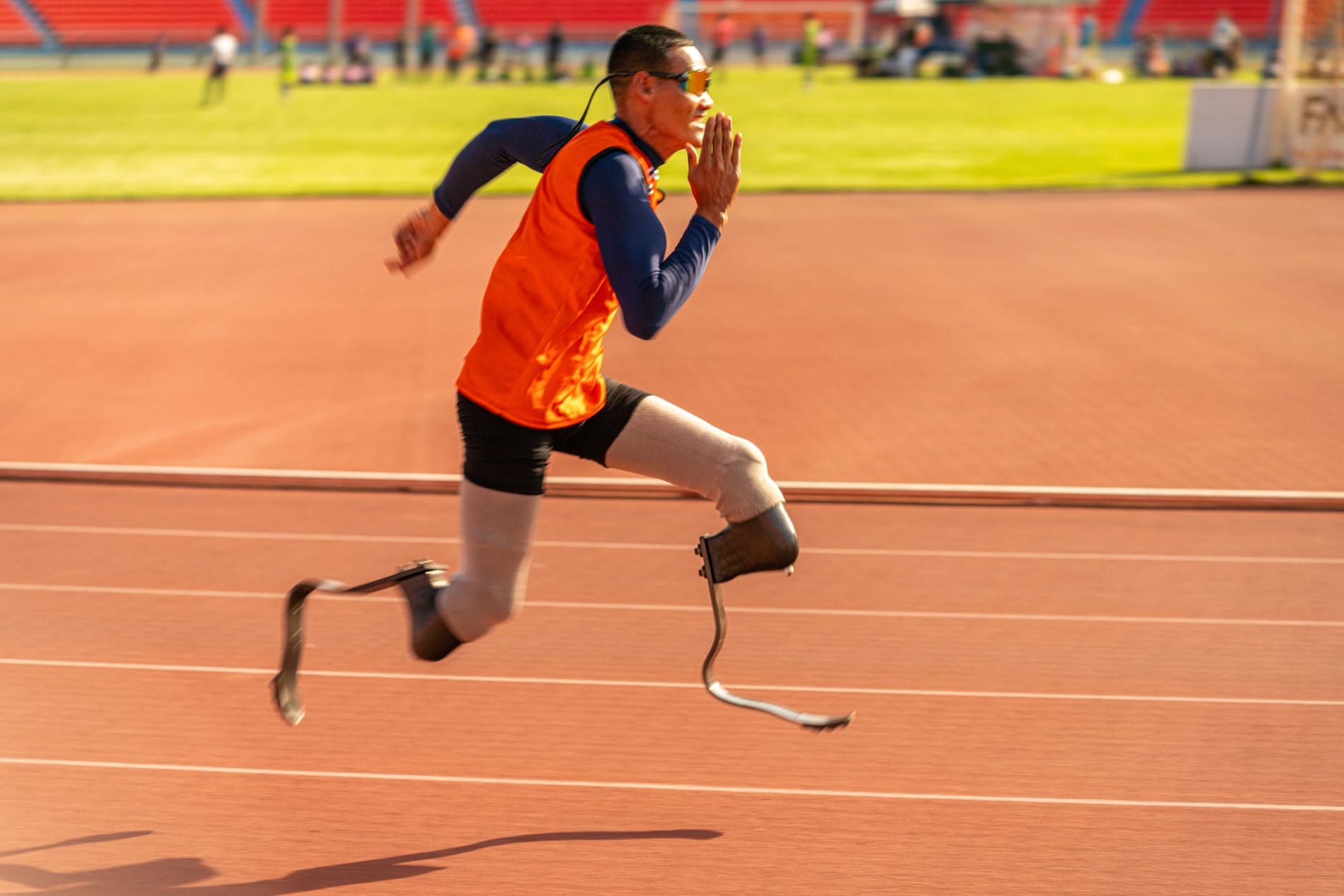Access to assistive technology shapes future Paralympic champions, and equity
The Paris 2024 Paralympic Games, taking place from 28 August to 8 September, represent the pinnacle of sporting achievement for athletes with disabilities.
The games will see 4400 athletes compete across 22 sports, showcasing their incredible capabilities and sporting prowess.
Assistive technology is vital in Paralympic sport, serving as essential, often bespoke, sporting equipment that allows athletes to compete at their peak potential.
Ready, set, go?
Assistive technology is an umbrella term for assistive products and their related systems and services. Assistive products encompass advanced prosthetics, customised wheelchairs and other devices, and have revolutionised the potential of para-athletes.
Advancing innovations in assistive products enables athletes to perform at their peak, breaking barriers and setting records in paralympic sports.
Australian Paralympian Kelly Cartwright says her sports prosthesis gave her “the confidence to do what was required to be the best athlete in the world”.
Yet, beneath these high-performance achievements lies a critical issue – unequal access to assistive technology.
This disparity not only affects Paralympic access and competition outcomes, but also has significant implications for young assistive product users aspiring to reach the highest levels of athletic performance.
The World Health Organisation reports access to assistive technology is unevenly distributed across the globe.
Research shows wealthier nations and athletes with better financial support can afford state-of-the-art assistive products, while others – particularly from low and low-middle-income countries – often completely lack access or rely on low-quality or outdated products.
Demonstrating the power of user-centred design and industry partnership, US Paralympians collaborated with BMW to engineer the ultimate racing wheelchair that “pushed the limits of sport”. Unsurprisingly, Team US was highly successful at the Tokyo Paralympics, winning several gold medals.
Closer to home, Basketball Australia and engineers from the Australian Institute of Sport adapted motor racing technology to design carbon fibre seating for some of the 2022 Paralympic Australian men’s wheelchair basketball team.
In contrast, para-athletes from poorer countries often participate with wheelchairs that are donated by not-for-profit organisations such as Humanity and Inclusion.
This assistive product access divide results in an uneven playing field where athletes’ performances aren’t solely a reflection of their skill, dedication and hard work, but also of their access to the best assistive products.
The disparity in resources and support goes beyond assistive technology, and is evident in countries represented, the number of athletes attending Paralympic Games, medal tallies, and performance outcomes.
However, it highlights an even greater issue in relation to assistive technology equity, as adapted sporting equipment is at the heart of Paralympic competition.

The power of early access to assistive technology
Our society is familiar with the incredible images of para-athletes racing down the stadium track in state-of-the-art wheelchairs, or prosthetic legs designed specifically for running.
These specialised assistive products differ from athletes’ everyday products, and research shows early access to recreational and sporting assistive products plays a crucial role in human development and social connection.
For young people with disabilities, this early exposure can be the key to participating in age-appropriate activities, achieving the recommended daily physical activity goals, and potentially excelling in elite sports.
The importance of early assistive technology access
Maintaining Australia’s competitive edge in Paralympic sports hinges on early access to assistive technology. Beyond such ambitious targets, early access also enables equitable childhood development.
Australia’s current Disability Strategy calls out access to assistive technology as a policy priority.
Early assistive technology access is vital for skill development, age-appropriate risk-taking, confidence building, and the fostering of a passion for recreational pursuits, including sport.
Children who receive the right support early on are more likely to be enabled to participate in sporting pursuits and – for some – develop into Paralympians.
Programs targeting young athletes must prioritise access to effective assistive products. If Australia is to enact the Australian Disability Strategy policy priority of access to assistive technology, collaboration will be required between people who use assistive technology, schools, community sports programs, local clubs, and government and sporting institutes to identify talent and provide necessary resources.
This holistic approach will better-ensure financial background and social capital doesn’t hinder the development of future Paralympic athletes.
A step towards greater assistive technology access
Australia has more than 100 assistive technology funding schemes, across state, territory and federal jurisdictions. These schemes differ in eligibility, the assistive products they cover, and funding limits, often focusing on products that support safety and independence at home rather than participation in recreation and sport.
While the National Disability Insurance Scheme may fund sporting assistive technology, the scheme is only available to a small percentage of Australians with disability.
To address this gap, the Australian government has announced an investment in an assistive technology hire and reissue pilot, commencing in Tasmania and South Australia, making sports and other assistive products more accessible.
This initiative could positively impact access to sporting assistive technology for people of all ages who might otherwise be unable to access or afford them.
Other exciting support for Australia’s para-athletes has been announced, including that Western Australian para-athletes competing in the Paralympic Games in France will be supported by the Cook government's $270,000 direct payment scheme.

The future
The Paralympic Games celebrate the triumph of the human spirit, the boundless potential of athletes with disabilities, and the power of assistive products and services.
However, to truly uphold the values of fairness and equality, it’s imperative to address the issue of unequal access to assistive technology.
Australia – with its strong support systems and commitment to Paralympic sports – can lead the way by ensuring all assistive technology users, regardless of their financial background, have the opportunity to compete on an even playing field.
As a high-income country with incredible sporting resources, Australia is also well-placed to lead international collaboration.
Countries need to work together to ensure a more equitable distribution of resources and assistive technology. This could involve sharing best practices, pooling resources, and establishing international funds to support athletes from less privileged backgrounds
Through continued investment in early access to assistive technology, and a collaborative approach, we can ensure the Paralympic movement remains a beacon of sporting competition for all.
This article was co-authored with Dr Lisa Chaffey, a former Paralympian and experienced occupational therapist with expertise in disability advocacy, community development, occupational therapy, and sports management.









